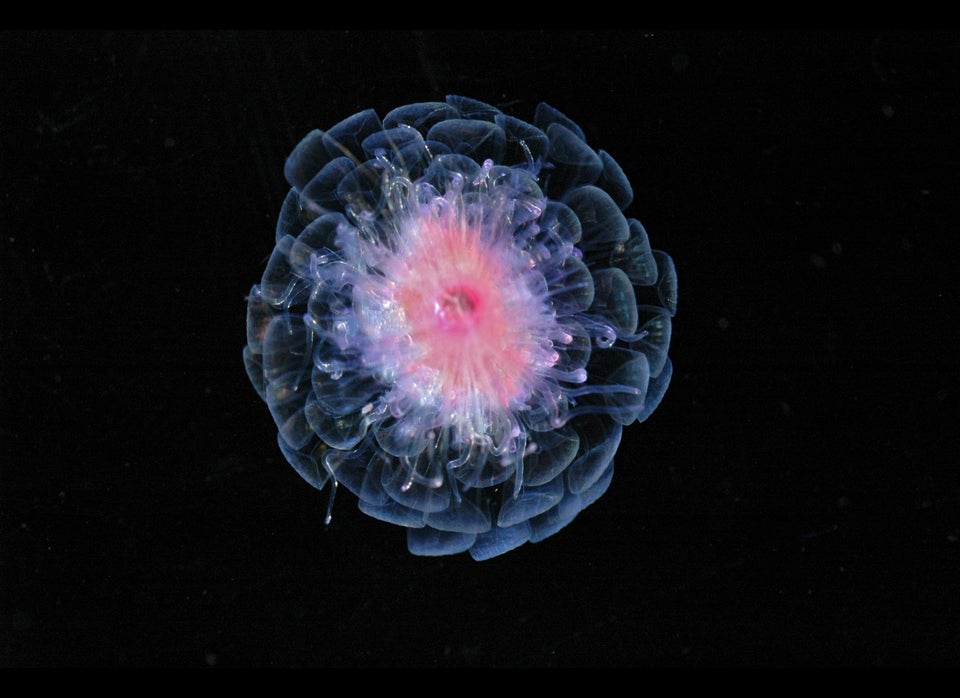The sailfish’s sword-like bill looks as if it was made to slash at prey. But a study published today in Proceedings of the Royal Society B reveals that the bill is actually a multifunctional killing tool, enabling the fish to perform delicate, as well as swashbuckling, maneuvers.
By following throngs of predatory birds off the coast of Cancún, Mexico, the study’s authors were able to track Atlantic sailfish (Istiophorus albicans) hunting sardines, says co-author Alexander Wilson, a behavioral ecologist now at Carleton University in Ottawa, Canada. He and his colleagues made high-speed, high-resolution films in the open ocean over six days in 2012.
Sailfish hunt in groups, taking turns to approach the ball of schooling fish. Their bodies darken and sometimes flash stripes and spots, perhaps to confuse the prey, or to signal to each other. “It’s a very orderly process,” Wilson says. “They don’t want to risk breaking their bills.”
Although sailfish are among the fastest creatures in the ocean — they have been documented to swim at more than 110 kilometers per hour, or 60 knots — the new research shows that their strategy is to approach their prey slowly from behind and gently insert their bills into the school, without eliciting an evasive maneuver from the sardines. Then, by whipping their heads in powerful, sudden jerks, they can slash their bills left and right, with their upright fins providing stability. In fact, their bill tips slash with about the same acceleration as the tip of a swinging baseball bat, even in the water, says co-author Paolo Domenici, an environmental physiologist at the Institute for the Marine and Coastal Environment of Italy's National Research Council in Torregrande, on the island of Sardinia. The result is a scene of fishy carnage, as the surrounding water fills with iridescent fragments of sardine skin.
It is remarkable how the sailfish’s bill and fins manage to counteract the fish’s large size (they grow to lengths of up to 3 meters or more), making them stealthy and quicker than the sardines, says fish biologist Paul Webb of the University of Michigan in Ann Arbor, who was not part of the study. “I think the sailfish have done something pretty clever in being able to get very close and then kick the crap out of their prey,” he says.
Jaws of death
To the researchers’ surprise, however, they found that the sailfish could also use their bills to make a much more gentle kill. They could single out an individual fish, destabilize it by tapping it and remove it from the school, then corral it into their mouths. Small, tooth-like protrusions on the bill, called denticles, seem to help with this. The technique might be more effective and energy-efficient than slashing, and the sailfish use it about half of the time, the researchers found. In fact, the sailfish seem to be able to hunt for as long as necessary without tiring, taking turns until there are no more sardines left. “The poor sardines are just being chased for hours and hours,” Wilson says. “There’s no reprieve.”
Nature documentaries have gathered good video footage of sailfish hunts in the past, but only a systematic study could expose the sailfish bill’s more subtle uses, says marine biologist Diego Bernal of the University of Massachusetts in Dartmouth, who was not involved in the study. Further research could reveal whether the bill has other functions in different hunting contexts, such as high-speed chases, or if its hydrodynamic properties help it to swim faster, he says. “This is a big change in jaw morphology that isn’t just a fluke,” he says. “There has to be a really good reason to keep it in that gene pool.”
This story originally appeared in Nature News.
